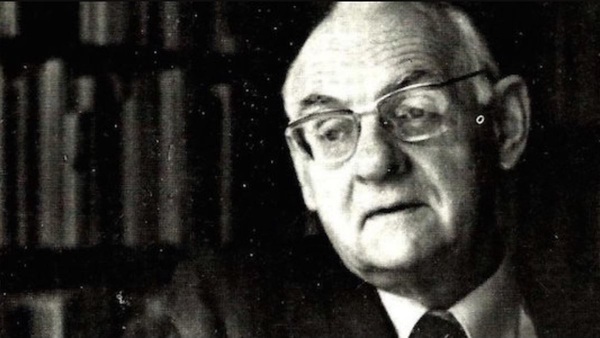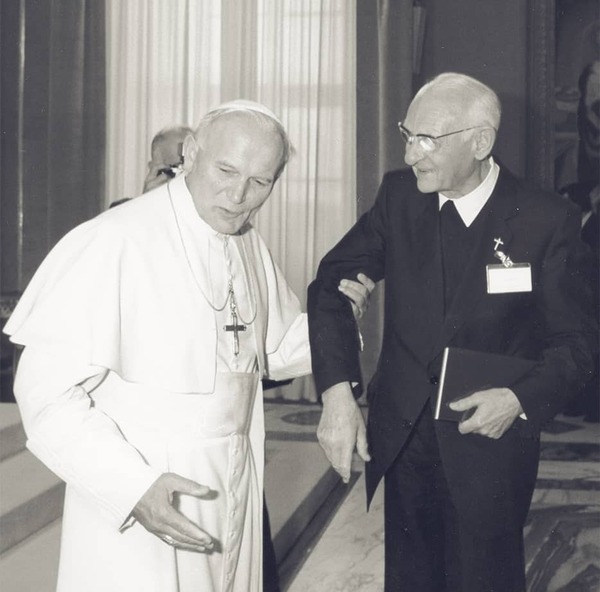
One would certainly have to number Hans Urs von Balthasar (1905-1988) among the most influential and prolific Catholic theologians of the twentieth century. It might thus come as a surprise that many of his works have yet to be translated into English, which was never a small task given that Balthasar’s oeuvre consists of more than 100 books and 500 articles. One of these yet-to-be-translated works is young Balthasar’s massive three-volume study Apokalypse der deutschen Seele. Studien zu einer Lehre von letzten Haltungen (AdS). Nevertheless, it surely is an important work, for it manifests numerous thematic and methodological concerns that will occupy Balthasar throughout his academic career.
The aim of this short essay is twofold. First, it highlights these thematic and methodological Balthasarian motives, thereby providing some orientation to the uninitiated reader who will easily feel bewildered by Balthasar’s baroque engagement with a sheer endless number of musicians, literary authors, philosophers, and theologians throughout the work. Second, it argues that the AdS is fundamentally a theological work not only despite but precisely in and through its constant and profound critical dialogue with philosophical and artistic thought. Given that this will become one of the most recognizable traits of Balthasar’s theological style, this essay may also provide a handy interpretive key to Balthasar’s corpus as a whole.
Volume one of the AdS (735 pages) was published in 1937, and volumes two (419 pages) and three (459 pages) in 1939. However, this work did have its precursors. In fact, Balthasar had already worked on an earlier version between 1928 and 1929. Its manuscript has been lost, but we know that it corresponded to the material of the first two volumes of the AdS. Similarly, Balthasar’s dissertation in Germanistik, entitled Geschichte des eschatologischen Problems in der modernen deutschen Literatur, which was self-published in 1930, provided much material for the AdS both methodologically and contentwise. However, it has been argued that in this work, Balthasar did not yet incorporate a genuinely “theological voice.” Thus, the question arises whether and, if so, how the AdS qualifies as a theological work.
In the AdS, Balthasar wants to “unveil” (enthüllen) the “interior” (das Innen), the most concrete reality of all, by means of a dynamic revelatory process that starts with the exterior. In order to express the interior’s concreteness, Balthasar uses the term “soul” (Seele) instead of the more classical, at least in the German-speaking world, “mind” or “spirit” (Geist). Thus, the living soul is said to be unveiled only in the exterior, for example, in history and the “environment” (Umwelt). Balthasar calls these exterior realities that are studied to come to know the interior soul “images” (Bilder) and “myths” (Mythen). Furthermore, Balthasar claims that these exterior realities are necessary not only because it is only in and through them that the living soul can be unveiled but also because the soul, as the most concrete reality, can express herself only in and through myths and images. In this sense, Balthasar concludes, they must be regarded as the mirror that the soul crafted to attain self-knowledge.

By way of contrast, the purely notional, rational discourse, in its scientific “objectivity” (Sächlichkeit) and universal, abstract truth, is not able to fully mirror, much less encapsulate, the concrete human living existence. However, it is important to note that Balthasar does not negate the importance of philosophy. Indeed, he argues that the philosophical discourse itself should be regarded as a “myth” whose many “essential images” (Wesensbilder) encircle the soul’s “fullness of being” (Seinsfülle). Thus, the Ads intends to uncover what is really “meant” (meinen), what is “referenced to” or “hinted at” (hinweisen), by the many exterior realities, and it incorporates not only diverse forms of art but also philosophy in its laborious quest for the soul’s interior.
This revelatory dynamic between the exterior images and the interior soul constitutes what Balthasar calls “human eschatology.” It comes as no surprise that the methodological point of departure (Ansatzpunkt) of any such “subjective eschatological” study must be the human subject, which does, to repeat, include the external objectivity as its means of expression and revelation. In this sense, the AdS studies classical “objective eschatological discourse,” “positive eschatology,” with all its terrifying images of judgment and divine wrath, only insofar as it is understood to be the image for the soul’s apocalypse, that is, for the “existential” or “mythical” eschatology. Ultimately, therefore, the subject—the historical, concrete existence, the soul—constitutes not only the AdS’s point of departure but also its true goal, its telos, that unifies the work as a whole.
However, all of this does not yet provide us with Balthasar’s full account of eschatology. Balthasar argues that for such a full account one must include the religious dimension, particularly in its most concrete form, to wit, Christianity. It is in this way that the AdS intends to unveil the soul’s ultimate concerns of a particular period in relation to the religiously ultimate, revealed in Christ. In other words, it wants to unveil the relationship of a particular human eschatology to the Crucified Christ—a relationship that can either fall into the extremes of “harmonic unity” (Übereinstimmung) or “ultimate opposition” (letzter Gegensatz).
Therefore, while the AdS wishes to reveal the dynamic between the soul and its historical images, its ultimate purpose consists in uncovering the relationship between the divine and human subjects—the drama between God and the soul. Accordingly, the preface to the second edition, published in 1947, states that the study intends to provide “the possibility for an unconditional decision” (Ermöglichung unbedingter Entscheidung). Clearly, although the AdS often reads like a dazzling literary-philosophical study, it is, at its very core, a genuinely theological endeavor. The AdS intends to lay the groundwork for any responsible and genuinely Christian eschatology while unmasking the various forms of anti-Christian or, worse, quasi-Christian eschatologies.
About the author

Fr. Christian J. Ivandić is a second-year Ph.D. student in Systematic Theology at the University of Notre Dame. Prior to his theological studies, he obtained a Ph.L. in philosophy with a specialization in metaphysics and philosophical theology at the Pontifical Athenaeum Regina Apostolorum in Rome, Italy.
Originally published by at eitw.nd.edu on April 09, 2024.